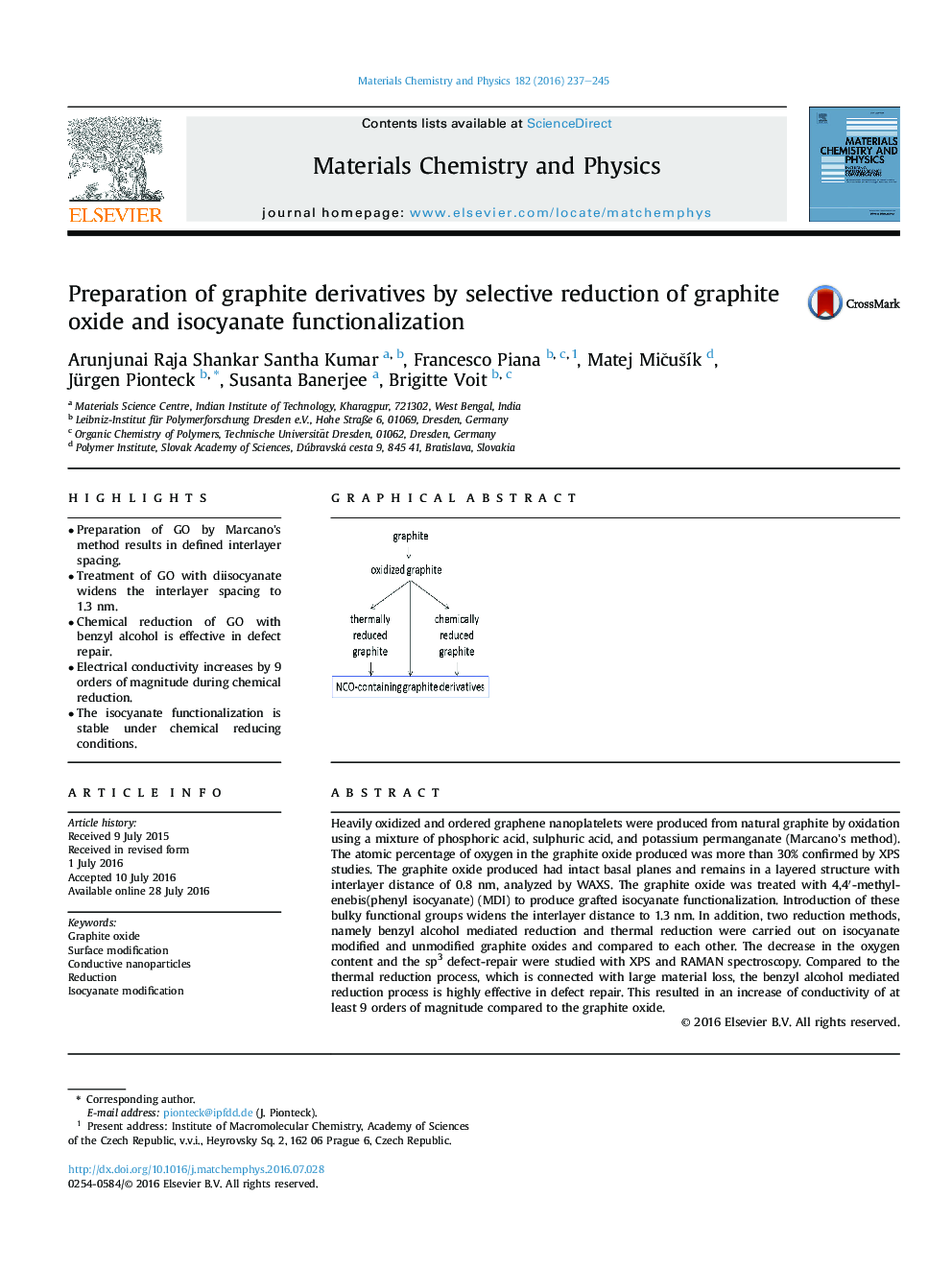| Article ID | Journal | Published Year | Pages | File Type |
|---|---|---|---|---|
| 1520394 | Materials Chemistry and Physics | 2016 | 9 Pages |
•Preparation of GO by Marcano's method results in defined interlayer spacing.•Treatment of GO with diisocyanate widens the interlayer spacing to 1.3 nm.•Chemical reduction of GO with benzyl alcohol is effective in defect repair.•Electrical conductivity increases by 9 orders of magnitude during chemical reduction.•The isocyanate functionalization is stable under chemical reducing conditions.
Heavily oxidized and ordered graphene nanoplatelets were produced from natural graphite by oxidation using a mixture of phosphoric acid, sulphuric acid, and potassium permanganate (Marcano's method). The atomic percentage of oxygen in the graphite oxide produced was more than 30% confirmed by XPS studies. The graphite oxide produced had intact basal planes and remains in a layered structure with interlayer distance of 0.8 nm, analyzed by WAXS. The graphite oxide was treated with 4,4′-methylenebis(phenyl isocyanate) (MDI) to produce grafted isocyanate functionalization. Introduction of these bulky functional groups widens the interlayer distance to 1.3 nm. In addition, two reduction methods, namely benzyl alcohol mediated reduction and thermal reduction were carried out on isocyanate modified and unmodified graphite oxides and compared to each other. The decrease in the oxygen content and the sp3 defect-repair were studied with XPS and RAMAN spectroscopy. Compared to the thermal reduction process, which is connected with large material loss, the benzyl alcohol mediated reduction process is highly effective in defect repair. This resulted in an increase of conductivity of at least 9 orders of magnitude compared to the graphite oxide.
Graphical abstractFigure optionsDownload full-size imageDownload as PowerPoint slide
